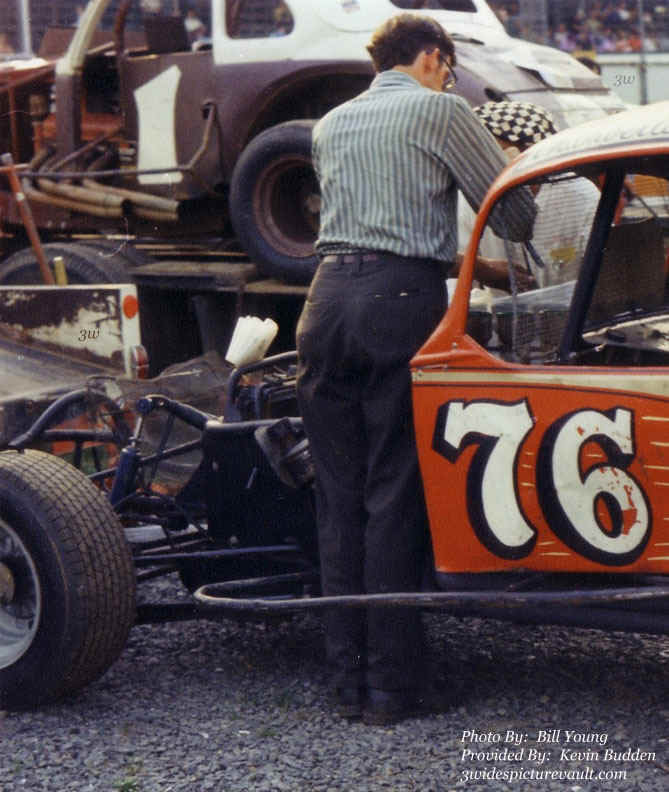

| Photo ID # | c11.19.06_076_CHA_FLM_0070_2 |
| Car #: | #76 |
| Driver (s) : | Gerald Chamberlain (Joe Bullock owned, Gus Freer wrenched) |
| Location: | Flemington |
| Date: | 1970's |
| Photographer: | Bill Young |
| Photo provided by: | Kevin Budden |
| Comments: | Possibly
one of the most interesting photos in the Vault. For every photo taken of cars on the track, and cars in victory lane, there are very, very few photos of cars in the pits and even fewer of mechanics doing what they did best. Speaking of mechanics and speaking of the best, here are 2 of the all time best: First, here we see Gus Freer putting the tune on the Ford powered Bullock #76. Whether it was Geralds driving, Bullock's ownership, or Freer's wrenching, many feel that this was one of the strongest teams of the 70's and maybe of all time. Secondly, you can't help but notice the ugly duckling Wally Mark's #1 coupe in the background. (Pretty sure that's Wally with the checker flag hat next to Gus.) I say "ugly" to draw attention to the fact that Wally probably wouldn't want it any other way. Wally figured that "ugly" wouldn't attract much attention and he was right. With the #1 setting still on the trailer we can see a few examples of Wally Marks' ingeniuity. For starters, check out the engine placement and the way the headers split around the front door pillar. This header design eliminated any unnecesary bends and twists so that the exhaust could make a quick exit. And finally, take a good look at the way the front of the door connects directly to the roll cage. Ray Neary (who learned a thing or 2 from working with Wally) told me that Wally felt that you had to think of a racecar as having a sheet of plywood across the front of it like a billboard going from left to right. Imagine how much work it is for that engine to push that through the air... If you could reduce the amount of air that you had to push out of the way, the engine could use the power saved to make the car faster. By reducing that area (left to right), Wally felt the car wouldn't have to push as much air. In additon, the less air that got inside the car, the less the coupe shell would act like a parachute so again, the car could cut through the air. By tucking the leading edge of the doors into the cage, the car caught less air than most of the other modifieds of the day. |
| Visitor's Comments | To add your comments about THIS PHOTO - Click Here | |
| Date: | Visitor's Name: | Comment: |
| 11/19/06 | ||
|